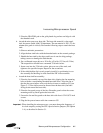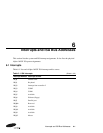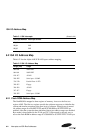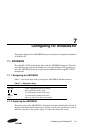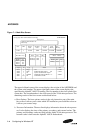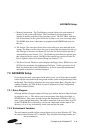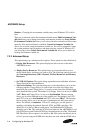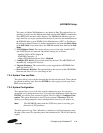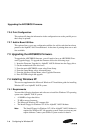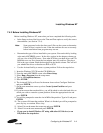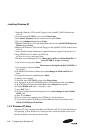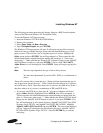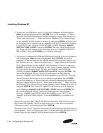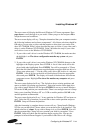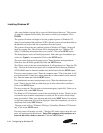
Configuring for Windows NT 7–5
ARCSBIOS Setup.
The option to Enable X86 Emulation is set default to Yes. This option allows an
operating system to use the X86 emulator built into the ARCSBIOS to emulate the
video BIOS built into most video adapters. The DIMM Bank Memory type set-
tings can allow you to get a performance increase if you know the manufacturer of
the SDRAM chips on your DIMMs. If the Manufacturer is NEC, or Toshiba use
the setting for them. If there it is another manufacturer use either the Other Mode
or the Safe Mode. If you don’t know the SDRAM manufacturer then use the Safe
Mode.
2. SCSI Miniport Order. This section allows you to set the order in which SCSI
and ATAPI devices are detected. The default settings are as follows:
Symbios 53C8xx SCSI Adapter: 0
ATAPI IDE Controller : 1
<Empty SCSI Miniport Driver Slot> : Disabled
3. Configure PCI devices. This section should not be used. The ARCSBIOS will
automatically configure PCI devices.
d. Upgrade Firmware. The section allows you to upgrade the ARCSBIOS firm-
ware (see Section 7.3).
e. Show Firmware Revision. This option displays the revision of the ARCSBIOS
firmware and shows if it is a valid image or not.
7.2.4 System Time and Date
The option allows you to set the time and date for the real time clock. Times should
be entered in military time. Press the ENTER key after typing in each entry. Press
ESC to exit the section.
7.2.5 System Configuration
This option allows you to look at the system configuration tree. You can move
around the tree by using the arrow keys. If you move the highlight to a disk and press
ENTER, you will be given a menu of options. The first option is Configure Com-
ponent. This option should not be used. The next option is Directory. With this
option you will be prompted to select which partition’s directory you wish to see.
Note: The ARCSBIOS cannot read the NTFS file system. It can only give
directories of FAT partitions.
The third option is Copy Files. When this is selected you will be prompted to enter
the path of the source file, then the path of the destination file. The file will then be
copied.



